Table of contents
Limes are refreshing in cocktails and lemonades, preferably in organic quality. The citrus fruits enrich Asian and Mexican dishes raw or cooked. The common or Persian lime ( Citrus latifolia) is the most commonly found lime in stores.
Use in the kitchen
The term lime covers several species of the genus citrus plants ( Citrus spp.). The common lime mentioned above ( Citrus latifolia, also known as Persian or Tahitian lime). Less commonly bought is the real lime ( Citrus aurantifolia, also called Mexican or sour lime). The main difference between the two is that the Persian lime's fruit is larger and seedless, while the Mexican lime is smaller and has seeds. 1,2 This article includes both species.
How can you eat limes? Because of their intense acidity, limes are rarely eaten pure or in large quantities. In the form of raw lime juice or zest, they give drinks and food a pleasantly sour freshness. The juice in particular is an important ingredient in many cocktails such as Caipirinha, Cosmopolitan, Cuba Libre, Daiquiri, Mojito or Margarita. Non-alcoholic cocktails or other non-alcoholic drinks, such as lemonade, can also be prepared with the green citrus fruit. The juice of the lime also rounds off cooked dishes.
Is a lime an unripe lemon? Limes and lemons ( Citrus limon) come from the same genus and are closely related. However, they differ in both appearance and taste. The most obvious differences are size and color: lemons are oval, limes are round and smaller. 3 Limes are also usually green - but can sometimes have a yellow tinge. Lemons, on the other hand, are usually yellow, although there are more green lemons on the market (see Lemons, raw). You can read more about this in the next chapter and in the additional information.
Limes are generally more acidic than lemons. They have an aromatic and spicy taste and a higher juice content than lemons. Tip: Roll the fruit on a hard surface before squeezing (carefully and with light pressure); this will help them release more juice.
What dishes are there with limes? Their aromatic, sour taste enhances vegan Mexican, Indian, Vietnamese and Thai rice dishes (e.g. fried rice with smoked tofu); as well as pasta dishes (e.g. Pad Thai, satay salad with soba noodles), curries, chili sin carne as well as fajitas and tacos. Limes also spice up raw marinades, sauces (e.g. for pasta) and salad dressings (e.g. for raw salads with carrots, red cabbage, radishes and cucumbers). Limes can also be used to create tasty vegan desserts and baked goods such as sorbets, creams, tarts, cakes and pastries. Lime slices are also often used as decoration. You can find recipes with lime juice in the associated article. There you can read more about how healthy lime juice is.
Conventionally grown (ie treated) limes should always be thoroughly washed under warm water and rubbed dry before use. This helps to reduce pesticides and artificial wax coatings on the peel. Organic limes are preferable for peel abrasion; 19 washing is still always recommended.
Vegan recipe for alcohol- and sugar-free mojito with lime
Ingredients (for 4 people): 320 g fresh pineapple (roughly chopped), 2 dates (pitted), 120 ml lime juice, 1 teaspoon ginger (chopped), 1 teaspoon lime zest (from a washed organic lime), 30 g fresh peppermint leaves, 480 ml carbonated mineral water, 250 g ice cubes.
Preparation: Finely puree the pineapple, dates, lime juice, ginger and grated lime peel using a high-performance blender. Add the peppermint leaves and chop briefly in the blender. Divide the ice cubes into four glasses. Add the mixture and top up with sparkling water. Decorate the refreshing and naturally sweetened mojito with mint leaves and serve immediately.
Vegan recipes with limes can be found under the note: " Recipes that have the most of this ingredient ".
| Not only vegans or vegetarians should read this: Vegans often eat unhealthily. Avoidable nutritional mistakes. |
Purchasing - Storage
Limes can be bought in most supermarkets (e.g. Coop, Migros, Denner, Volg, Spar, Aldi, Lidl, Rewe, Edeka, Hofer, Billa). In Germany, Austria and Switzerland, Persian limes are mainly sold, and Mexican limes are rarer. Organic supermarkets in particular (e.g. Denn's Biomarkt, Alnatura) offer the green citrus fruits in organic quality. Limes are available in stores all year round.
Basically, ripe limes are green; depending on specific temperature conditions during growth, the fruits can take on a yellowish discoloration, which does not affect the quality. Only overripe specimens are completely yellow 3 (unless we are dealing with a rarely available yellow variety such as the sweet lime). You should also avoid buying dried fruits.
If the fruit is declared as 'untreated', the peel has not been exposed to any preservatives or pesticides after harvest. Nevertheless, such fruits can contain pesticide residues and be waxed, i.e. covered with a waxy protective layer. Organic limes are subject to stricter guidelines. 19
The availability of limes varies depending on the size of the store, catchment area, etc. Our recorded food prices for the DA-CH countries can be found above under the ingredient image - and by clicking on them you can see their development at different suppliers.
Storage tips
Limes can be stored in the refrigerator for up to three weeks. To do this, they should be placed in an airtight container. Raw limes can also be stored at room temperature. Here they begin to dry out after about five days.
An unripe lime will not ripen because limes are not climacteric.
Ingredients - Nutritional values - Calories
Raw limes of the species Citrus latifolia are low in calories and fat, with 30 kcal and 0.2 g fat per 100 g. Carbohydrates are 11 g/100g, of which 1.7 g is sugar. 0.7 g of protein can be found in 100 g of limes. 4 The following are three notable lime ingredients:
How much vitamin C does a lime have? The vitamin C (ascorbic acid) content in limes is 29 mg/100g (36% of the daily requirement). This is similar to that of mandarins (27 mg/100g) and passion fruit (30 mg/100g). Other citrus fruits such as grapefruit (34 mg/100g), clementines (49 mg/100g), lemons (53 mg/100g) and oranges (53 mg/100g) contain slightly more vitamin C. Raw yellow bell peppers provide significantly more at 184 mg/100g. 4
How many limes would you have to eat a day to theoretically cover your daily vitamin C requirement? You would have to eat around 280 g. This means that limes are not a very efficient source of vitamin C (we have compiled better sources in our video).
100 g of raw limes contain 102 mg of potassium (5% of the daily requirement). Apples (107 mg/100g) and pineapples (109 mg/100g) have a similar content, lemons slightly more (138 mg). Fennel seeds, of which only small amounts are used, contain almost 17 times as much potassium at 1694 mg/100g. 4
Raw limes contain 33 mg of calcium per 100 g (4% of the daily requirement). A similar amount can be found in kiwis (34 mg/100g) and clementines (30 mg/100g). Fennel seeds again contain significantly more at 1196 mg/100g. 4
The complete ingredients of raw limes, the coverage of the daily requirement and comparison values with other ingredients can be found in our nutrient tables. In the article Nutrients explained you will get a detailed insight into the topic.
Health effects
Are limes healthy? There are a number of studies on the health effects of the Mexican lime ( Citrus aurantifolia). Publications on the Persian lime ( Citrus latifolia) are rarer, although this species is much more common over the counter. Many of the properties are probably transferable to this other type of lime.
Secondary plant substances
Many of the health effects of limes can be attributed to the secondary plant substances they contain. Our article on secondary plant substances provides an overview of the classification of substance groups, their occurrence in foods and possible effects on humans. Limes contain the following secondary plant substances, among others: 5,7,10
- Isoprenoids: Monoterpenes (limonene, citral, alpha-terpinene, gamma-terpinene, beta-santalol, beta-ocimene, borneol, camphene, geraniol , phellandrene, citronellol, geranyl acetate, linalyl acetate, linalool); monoterpenoid (fenchon); diterpene (phytol); sesquiterpenes (farnesene, ledol); sesquiterpenes (sesqui-phellandrene); triterpenes (steroids); saponins ; Carotenoids : carotenes (beta-carotene), xanthophylls (β-cryptoxanthin)
- Polyphenols: Phenolic acids: Hydroxycinnamic acids (chlorogenic acid); Flavonoids: Flavanones (hesperedin, hesperetin, naringin, naringenin, eriocitrin), Flavonols (rutin, kaempferol, quercetin), Flavanones ( narirutin ), Flavones (apigenin, nobiletin); Tannins
- Other nitrogen-containing compounds: biogenic amine (synephrine, tyramine, octopamine), amides
- Other organic compounds: aldehydes (nonanal); alcohols (nerol); alkanes (cyclopentane); ketones (1,3-cyclopentanedione); coumarins: furocoumarins (limettin, bergapten, xanthotoxin, umbelliferone)
However, it should be noted that the composition of secondary plant substances in limes can vary depending on the variety, time of harvest and growing conditions. Therefore, quantities are only of limited use and should only be understood roughly.
The essential oil is usually obtained by steam distillation from the leaves and fruit peels. It consists of 75% monoterpenes: 36% limonene, 9% beta-pinene, 8% alpha-terpineol and 7% citral. The essential oils have anti-carcinogenic, antioxidant, antimicrobial, anti-inflammatory effects on ulcers and liver protection. Due to its antibacterial and antifungal effects, it is an important ingredient in skin care products. 5
The Mexican lime ( C. aurantifolia) is considered to be rich in secondary metabolites, such as flavonoids, phenols, limonoids, amines, coumarins, carotenoids, terpenoids, terpenes and essential oils. These secondary plant substances have a wide range of biological activities, including antibacterial, antifungal, insecticidal, antioxidant and anti-inflammatory. C. aurantifolia also has anti-cancer, antidiabetic and antihypertensive effects, can protect the heart, liver and bones and prevent urinary tract diseases. The flavonoids found in the extract of C. aurantifolia are apigenin, rutin, kaempferol, quercetin and nobiletin. In addition, flavonoids such as eriocitrin and hesperidin, which have an antioxidant effect, are also included. 5,6,7
Flavonoids are found in all parts of the plant. Persian lime ( C. latifolia) is known to have antimutagenic and antioxidant properties. 8 A 2014 study examined the effects of C. latifolia juice on patients with menstrual problems. The results showed that the flavonoids contained in the juice reduced the duration and intensity of excessive bleeding, the occurrence of dysmenorrhea (painful periods), and the presence of clots. 9
Dangers - Intolerances - Side effects
In some people and under certain environmental conditions, limes can cause skin reactions. These are due to contact with the peel or juice and manifest as dermatitis or phytophotodermatitis. Contact dermatitis is a change in the condition of the skin due to contact with irritating or allergenic substances. In the acute phase, this is characterized by the appearance of redness, itching and blistering. 10
Folk medicine - natural healing
In folk medicine, limes are known to relieve colds, flu and other illnesses, but primarily as a tea made from leaves and essential oils. The fruit was once recommended as a source of vitamin C to treat scurvy, 2 although its vitamin C content cannot compete with top performers (see chapter Ingredients).
Ecological footprint - animal welfare
The ecological footprint of a food depends on various factors: the type of agricultural production (conventional vs. organic); seasonal, regional or domestic production or import by truck, ship or plane; different types of packaging and whether the goods are fresh or frozen.
According to The Big Climate Database, the carbon footprint of limes is 0.87 kg CO 2 eq/kg for the Danish market. Compared to meat (e.g. lean beef with 35.86 kg CO 2 eq/kg), exotic fruits with long transport routes such as limes, lemons (0.94 kg CO 2 eq/kg) or bananas (0.98 kg CO 2 eq/kg) also cause significantly lower emissions. 11
The total water footprint of a product shows how much water is needed to produce a food. It is made up of the green, blue and grey water footprint: The green refers to all the rainwater (used by plants). The blue is the amount of surface and groundwater required. The grey water footprint describes the amount of fresh water required to compensate for water pollution caused by production. According to a Dutch study from 2011, the total water footprint of limes is 642 litres of water per kilogram of fruit (green = 432 l/kg; blue = 152 l/kg; grey = 58 l/kg), which is below the general average for fruit (967 l/kg). 12 Beef also tops this value by a multiple (average 15,415 l/kg). 20
For detailed explanations of various sustainability indicators (such as ecological footprint, CO2 footprint, water footprint), see our article: What does the ecological footprint mean?
Conventional lime cultivation uses chemical pesticides that can penetrate the fruit's skin. The use of these chemicals is prohibited in organic cultivation, and the fruit's skin remains free of them after harvest - as well as artificial wax layers. It is therefore best to choose organic limes. 13,19
Worldwide occurrence - cultivation
The lime originally comes from Southeast Asia and is native to the tropical and subtropical regions there. Today, the green citrus fruit is grown in Asia, America and Europe. The largest production sites for Mexican limes ( C. aurantifolia) are in Mexico, South Florida and California. 2,7,14 Mexico is also considered the world's leading producer and exporter of Persian limes ( C. latifolia). 1
Growing your own
Lime plants are extremely sensitive to cold. In regions with cold winter months, they are grown in pots. 15 As the Mexican lime grows more compactly than the Persian lime, growing them in pots is less laborious. 3 During the warmer months, a sunny location (e.g. in the garden or on the balcony) is ideal for the trees. The roots of the plants do not like it too hot: therefore, the pot should not get too much sun in midsummer. When overwintering, make sure the tree is in a warm (8-15 °C), sheltered and bright place without underfloor heating. Water and fertilize the lime tree as needed, but preferably not too much. 15
Further information
The species-rich genus of citrus plants ( Citrus) is part of the botanical family of Rutaceae. In addition to the lime, other species are known: lemon ( C. limon), mandarin ( C. reticulata), grapefruit ( C. paradisi), orange ( C. sinensis), pomelo ( C. maxima) and bitter orange ( C. aurantium, not bergamot as stated in source 7). In addition to the lime species mentioned above, there are also the Kaffir lime ( C. hystrix ; famous for kaffir lime leaves), the sweet lime ( C. limetta), the Australian desert lime ( C. glauca) and the Rangpur lime ( C. limonia ; with orange flesh 3). 2,7
Whether the citrus plants mentioned are valid species in the botanical sense is a matter of debate among experts. Some experts are of the opinion that there are only three recognized basic species of the genus Citrus : citron ( C. medica), mandarin ( C. reticulata) and grapefruit ( C. maxima). The others are so-called introgressive hybridizations of the basic species. Others also include the Mexican lime ( C. aurantifolia), the Micrantha ( C. micrantha) and the species Citrus halimii (not halmii as in the source) in the list of basic species. 16
The triploid Persian lime is the result of the fusion between a diploid male gamete (sex cell) of the Mexican lime and a haploid female gamete of the lemon. The Mexican lime itself is the result of an interspecific hybridization between C. medica and C. micrantha. 17,18
Note: For hybrids, it is actually correct to put an "x" between the genus name and the species name in the botanical name: e.g. Citrus x latifolia for the Persian lime and Citrus x aurantifolia for the Mexican lime. For C. aurantifolia there is also the spelling with a double-i ( aurantiifolia).
What do lime plants look like? The Mexican lime grows on a perennial, evergreen and densely branched tree. This can reach a height of 3-5 m. Its surface is covered with rigid thorns. The leaves are elliptical to oval in shape and have serrated edges. Leaf colors vary from yellow-green to dark green. The lime flower is yellowish-white and consists of 4-5 petals. 10 Persian limes have wider leaves. 3
Are limes green or are there yellow limes? Most lime fruits are green when ripe, but low nighttime temperatures can cause the skin to turn yellow. Species that have yellow skin when ripe include the sweet lime ( C. limetta).
Alternative names
The term lime comes from French. It is the diminutive form of the word "lime" and therefore means small lemon. Limes used to be called limones. In some countries, however, this name is synonymous with lemon. This is why the word lime has become established. Incorrect spellings include limeten or limmeten.
What is the name of lime in English? In English, lime is called lime. The Mexican lime is also known as key lime, Mexican lime, bartender's lime or West Indian lime. Persian lime, Tahiti lime or Bearss lime (Bears' lime in the source) are the English names for the Persian lime. 2
Other uses
The essential oil from limes is used in the pharmaceutical industry as a flavoring, in syrups and suspensions, as well as in the cosmetics industry and perfumery. 2,16 Lime trees are valued in landscaping or as ornamental plants in front gardens and backyards. 16
Bibliography - 20 Sources
| 1. | Raddatz-Mota D, Franco-Mora O et al. Effect of different rootstocks on Persian lime (Citrus latifolia T.) postharvest quality. Scientia Horticulturae. 17 November 2019;257:108716. |
| 2. | Cruz-Valenzuela MR, Tapia-Rodríguez MR et al. Lime (Citrus aurantifolia) oils. In: Preedy VR (Ed.) Essential Oils in Food Preservation, Flavor and Safety. 2016:531-537. |
| 3. | Plantura garden: Limette: Steckbrief, Arten & richtige Lagerung. |
| 4. | USDA United States Department of Agriculture. |
| 5. | Indriyani NN, Anshori JA et al. Bioactive components and their activities from different parts of Citrus aurantifolia (Christm.) Swingle for food development. Foods. 2023;12(10):2036. |
| 6. | Dosoky NS, Setzer WN. Biological activities and safety of Citrus spp. Essential oils. Int J Mol Sci. 2018;19(7):1966. |
| 7. | Narang N, Jiraungkoorskul W. Anticancer Activity of Key Lime, Citrus aurantifolia. Pharmacogn Rev. 2016;10(20):118-122. |
| 8. | Toscano-Garibay JD, Arriaga-Alba M et al. Antimutagenic and antioxidant activity of the essential oils of Citrus sinensis and Citrus latifolia. Sci Rep. 2017;7:11479. |
| 9. | Robeldo T, Canzi EF et al. Effect of Tahiti lime (Citrus latifolia) juice on the production of the PGF2α/PGE2 and pro-inflammatory cytokines involved in menstruation. Sci Rep. 2020;10:7063. |
| 10. | Alessandrello C, Gammeri L et al. A spotlight on lime: a review about adverse reactions and clinical manifestations due to Citrus aurantiifolia. Clin Mol Allergy. 2021;19:12. |
| 11. | The Big Climate Database. Version 1. Lime, raw; Banana, raw; Lemon, raw; Beef, low fat. |
| 12. | Mekonnen MM, Hoekstra AY. The green, blue and grey water footprint of crops and derived crop products. Hydrol. Earth Syst. Sci. 2011;15:1577–1600. |
| 13. | Pini U. Das Bio-Food Handbuch. Ullmann Verlag: Potsdam; 2014: 439-40. |
| 14. | Roger PJD. Heilkräfte der Nahrung, Praxishandbuch. Advent-Verlag: Zürich. 2008: 351. |
| 15. | Plantura garden: Limetten pflanzen, pflegen & richtig überwintern. |
| 16. | CABI Digital Library org: Citrus aurantiifolia (lime). 2019. |
| 17. | Sivager G, Calvez L, Bruyere S et al. Specific physiological and anatomical traits associated with polyploidy and better detoxification processes contribute to improved huanglongbing tolerance of the Persian lime compared with the Mexican lime. Front Plant Sci. 2021;12:685679. |
| 18. | Rouiss H, Bakry F et al. Origin of C. latifolia and C. aurantiifolia triploid limes: the preferential disomic inheritance of doubled-diploid ‘Mexican’ lime is consistent with an interploid hybridization hypothesis. Ann Bot. 2018;121(3):571-585. |
| 19. | Bundeszentrum für Ernährung (BZfE). Zitrusfrüchte: Einkauf und Kennzeichnung. 25.07.2023. |
| 20. | Mekonnen MM, Hoekstra AY. A global assessment of the water footprint of farm animal products. Ecosystems. April 2012;15(3):401–15. |

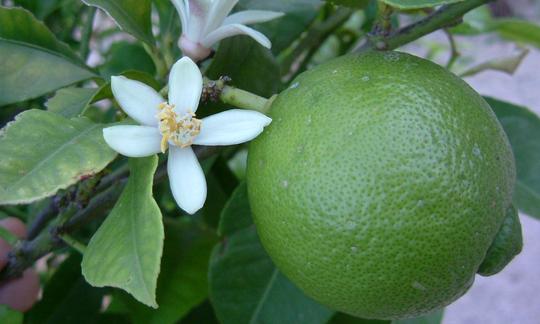

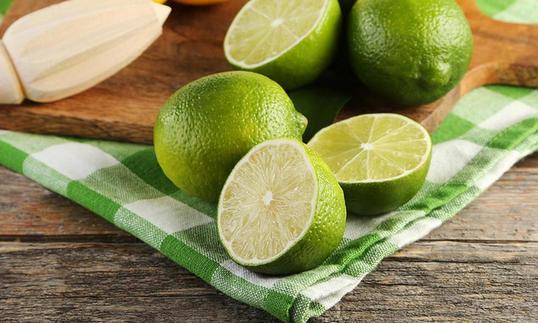

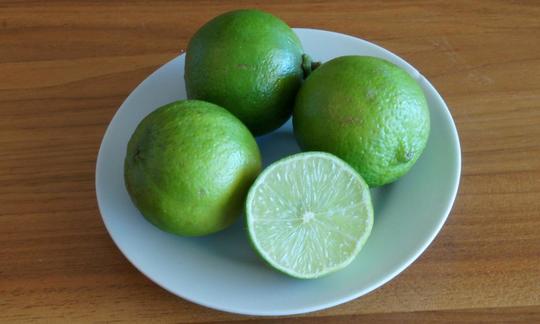


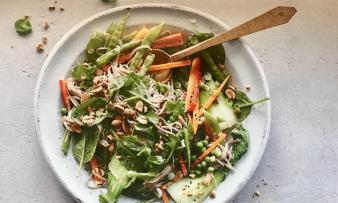
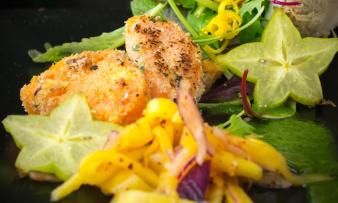





Comments